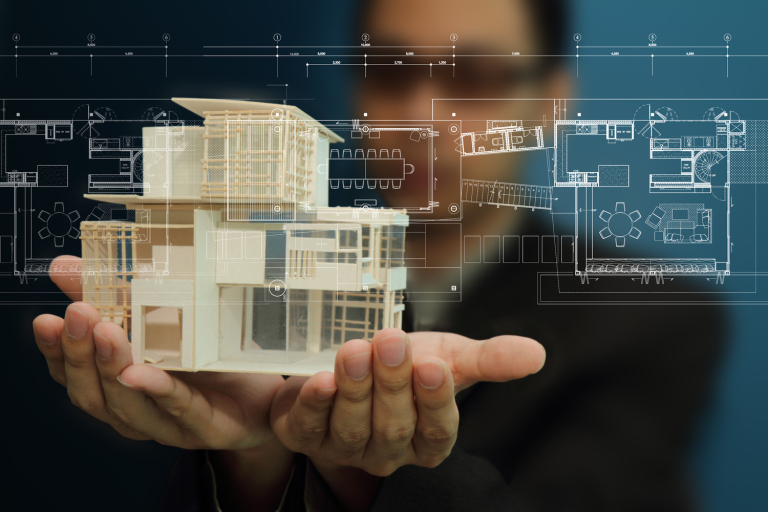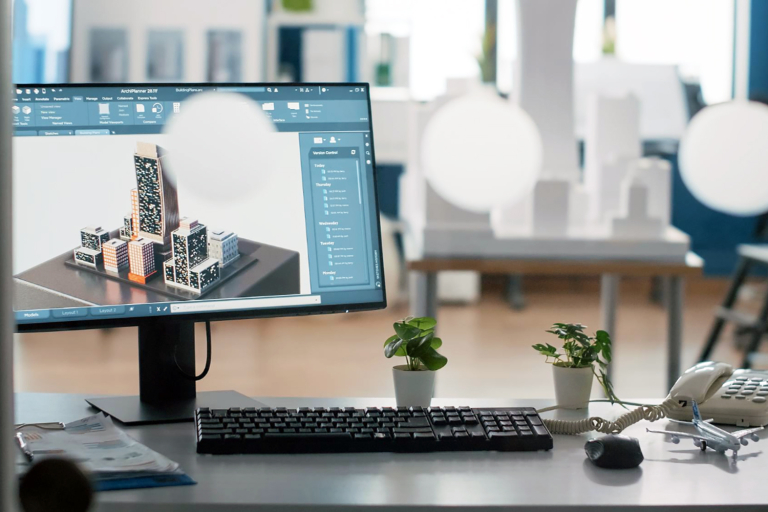In the world of construction and architecture, there's a helpful tool called Building Information Modeling, or BIM for short. It can make projects better by helping people work together and save money. But, sometimes, people believe things about BIM that aren't true. These wrong ideas can stop them from using BIM to its full potential.
In this guide, we'll talk about some of these common BIM myths and explain why they're not true. It's like shining a light on the real facts behind BIM so that you can use it better. Let's leave these BIM myths behind and learn what's real.
10 Common BIM Myths Clarified
Myth #1: BIM is only 3D drawing
BIM isn't just making pictures in 3D. While 3D BIM modelings are a clear way to show how things change, they're only one part of a bigger process. The word 'modeling' in 'BIM' can be confusing. BIM is more than making a visual picture of something. It's about working together to create digital data. This data has both pictures and non-picture information.
We put this data in a shared digital place called the Common Data Environment (CDE). Then, we can use it to make combined models. In short, BIM is really about carefully handling information throughout the life of an object. To work like this, you need to think about people, how things happen, and technology. It's not just about the 3D model.
The real deal? BIM is definitely more than just 3D models!

Myth #2: BIM Slows Work and Productivity
Starting with new methods takes time and planning. Choosing the right test project and allocating resources helps you learn and gain momentum. Initially, BIM may seem to delay things compared to traditional methods, as it focuses on creating project-related information upfront. However, training and resources are available to help you catch up, even for busy firms.
The construction industry has continually evolved, from pens to mice and CAD. BIM is the next step, and like typewriters in modern offices, it will become the norm. So, the time invested now will pay off in the future.
The truth? BIM may initially slow you down, but long-term productivity gains outweigh the initial investment.

Myth #3: BIM Will Cost More
Changing how things work at the start might need some money, but you'll save more in the long run. BIM isn't just about buying software, getting new tools, or training; it might need money for all of these. But BIM doesn't have to be super expensive. You can find free or low-cost tools and lots of help easily.
Also, you get to choose what parts of BIM you want to start with and when, so you can control costs and time to fit with your existing plans. Just be careful about charging clients more because they might not understand why they should pay extra for things to be done 'right.'
The truth? There are some upfront costs, but you'll save more in the long run.
Myth #4: BIM Is Only For Big Stuff - Big Companies, Big Buildings, Big Government Projects
Fancy projects and big examples often highlight BIM, but that doesn't mean it's just for huge things. Actually, smaller companies can benefit a lot from BIM because it helps with teamwork and efficiency. The thing is, all organizations spend money in similar ways (just different amounts) to finish projects.
Even though governments are pushing for BIM on their projects because it saves time and money, it's not only for big public projects. Private companies are also using BIM for all sorts of projects, whether they're big or small, easy or tough.
The truth? Whether it's big or small, simple or complex, public or private, everyone and every project can gain from BIM.

Myth #5: BIM Is A Short-Lived Trend
Some of the main ideas behind BIM have been around for a while. People were talking about how coordinated design can save money back in the 1970s, and the idea of using technology to find problems in plans goes back to 1966.
BIM isn't a passing fashion; it's a natural progression that's made possible by technology getting better. The world is changing, and BIM is part of that change. One day, it'll be the normal way of doing things, and the people who embrace it will benefit the most.
The truth? BIM is a step forward for the construction industry. It's not a short-lived trend; it's here to stay and will become the new normal.
Myth #6: BIM Only Helps Designers And Builders
BIM shares the same information with everyone involved in a project, so it benefits everyone. Designers can focus on designing because they know their work will look good and function well. Owners and builders can use data to explain designs clearly to clients. And for those who care about costs after the project is done, organized digital data makes it easy to see where money is spent.
The truth? BIM isn't just for designers and builders; it's for everyone involved!
Myth #7: BIM Is Just a Software
BIM is not just software; it's a way of thinking. To use BIM, you need to think about people, how things are done, and technology. You have to change how your company works to get the full benefits of digital, collaborative construction. The most important thing you'll invest in is making these changes, not the cost of software to make models or manage data.
The truth? While software is important, BIM is about much more - it's about making big operational changes.

Myth #8: BIM Solves Clash Detection
In Level 2 BIM, people have to share files at certain times during a construction project. This data helps create a big model that shows where different teams' work might clash. One valuable tool for this is BIM clash detection. BIM software lets designers check for clashes in their own models and when they're put together with others. This should make it easier to find and fix clashes, but it's still important to use common sense. Some clashes, like pipes inside walls, might be okay and not need fixing. Being careful and thorough is still important.
The truth is, software can point out clashes, and sharing data can help fix them early. However, BIM can't replace careful planning and common sense in architecture.
Myth #9: Clients Are Confused About BIM Data.
Clients often ask for BIM projects without fully knowing what it means or the benefits. That's why it's important for everyone involved to start talking early. This way, clients and facility managers can express their needs. Things like BSRIA/UBT Soft Landings Framework and Government Soft Landings can be useful. Also, resources like "BIM for Construction Clients" can be helpful.
The reality? Talking to clients early can help set clear expectations and improve project results from start to finish.

Myth #10: Geometry Requirements are too Complicated
Sometimes, people feel like they have to model every tiny part of a project. However, you don't need to do that unless the client asks for it. With BIM, it's usually enough to give a hint about a product instead of making it from scratch. You just need to provide information for the project team to choose the right building materials.
As the project goes on, you'll replace these hints with real products and more details. Objects can start as simple shapes, like a 3D rectangle, to show what's planned. When you're designing, you can add real product info, so you don't waste time at the start.
The truth? Clients should decide how much detail they want, and you don't have to model every little thing.
Conclusion
Welcome to the world of BIM myths and facts. We are Harmony Advanced Technologies, a company with more than 20 years of experience in designing BIM and CAD construction software. We are located in Vietnam and Germany.
We specialize in BIM/CIM modeling services that help you understand what's true about BIM. BIM can make your construction projects better. It helps you work together and do things more efficiently.
If you want to learn more and start using BIM, contact us today. Click here to get in touch with us. Let's make your construction projects better together!
Categories





